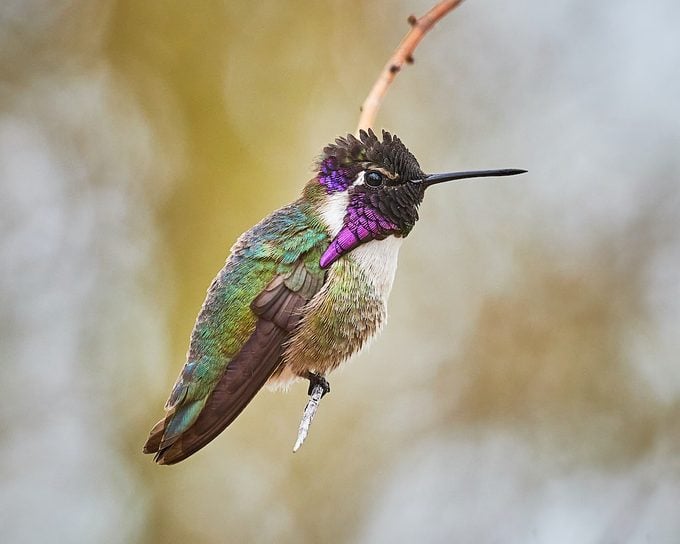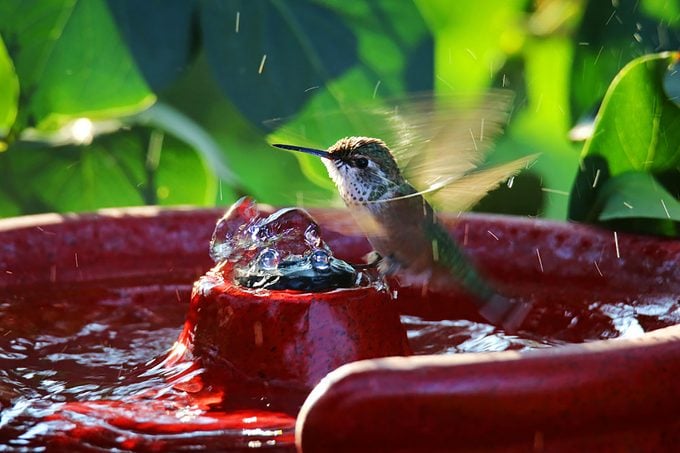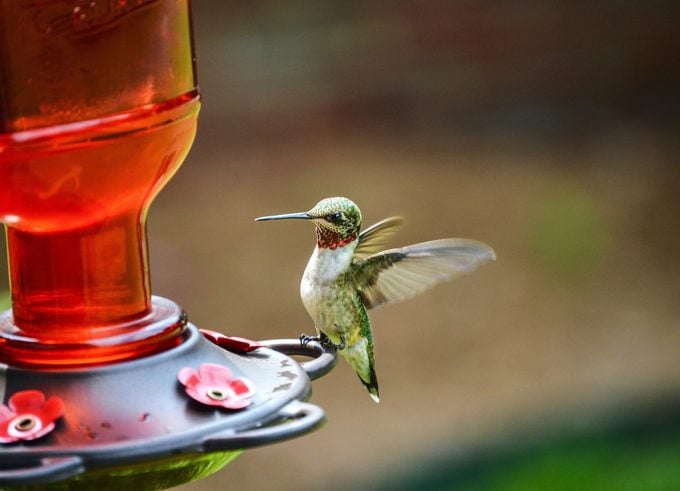How You Can Help Hummingbirds in Extremely Hot Weather
Updated: Mar. 28, 2023
From adding a bird bath to cleaning feeders more often, here's what you can do to keep your hummingbirds safe on days with hot weather.
Our editors and experts handpick every product we feature. We may earn a commission from your purchases.
When it’s hot outside, we humans reach for cold drinks, dive into refreshing pools and crank the air conditioning. Hummingbirds, on the other hand, can’t duck indoors when steam’s rising from the pavement. Should you worry about your favorite flying jewels when temperatures rise? We consulted John Shewey, author of The Hummingbird Handbook, to learn how hummingbirds adapt to hot weather. He also discusses how you can help these tiny fliers when temperatures climb.
How do hummingbirds survive snow and cold weather?
How Do Hummingbirds Tolerate Heat?

These tiny birds are better adapted to hot weather than you’d think. After all, most members of the hummingbird family live in the tropics. John says heat exhaustion for a hummer is possible in theory, but they’ll seek out shelter from heat much as humans do.
“Given shade and moisture, hummingbirds can tolerate plenty of heat,” John explains. “Some species in fact, like the Costa’s hummingbird of the Southwest, are well-adapted to heat.” He also mentions that hummingbirds have areas of low feather density around their legs, eyes, and the bases of their wings. These features of their anatomy help them shed any excessive warmth during flight.
Where do hummingbirds sleep at night?
How Can You Help Hummingbirds in Hot Weather?

That doesn’t mean hummingbirds don’t need help on sweltering days. John points out that in many places, summertime temperatures are gradually increasing. Humans, he says, are agents of extreme habitat alteration. What does that mean? John gives an example: “A nicely mowed lawn and manicured yard looks nice, but it’s a severe departure from a natural habitat.”
Create Shady Spots for Birds to Rest and Cool Down
If you want to help these gorgeous birds, consider planting hummingbird plants that thrive in shade, and providing plenty of shade in your yard, in general.
How Often Should You Change Hummingbird Food in Summer?
It’s especially important to pay attention to your hummingbird feeders during hot weather. Sugar water spoils faster when temperatures heat up. Those who enjoy feeding hummingbirds need to be aware of when they last changed the nectar.

“The single most important thing we can do for hummingbirds during any weather is to never allow our sugar water to start going bad,” John says. “When the temperature outside hits 80 (degrees), change out sugar water every day. Above 90, and especially above 100, provide fresh nectar twice or even three times a day.” He also recommends scrubbing feeders with hot water and rinsing them thoroughly before refilling.
To help keep the nectar fresh a little longer, keep the feeders out of full sunlight during the hottest part of the day. That doesn’t necessarily mean burying them in deep shade, where hummers might not see them; dappled light and shade may work best.
Add a Water Feature
Hummingbirds also enjoy bird baths. John says adding a mister to your yard is a great way to give them the chance to take a delightful shower. “You can even ‘train’ hummingbirds to anticipate a good mist by using a mister with a timer that turns on the mist at the same time every day,” John says.
To learn more, check out The Hummingbird Handbook: Everything You Need to Know About These Fascinating Birds, published by Timber Press.
Next, learn how to keep your yard safe from hummingbird predators.




















